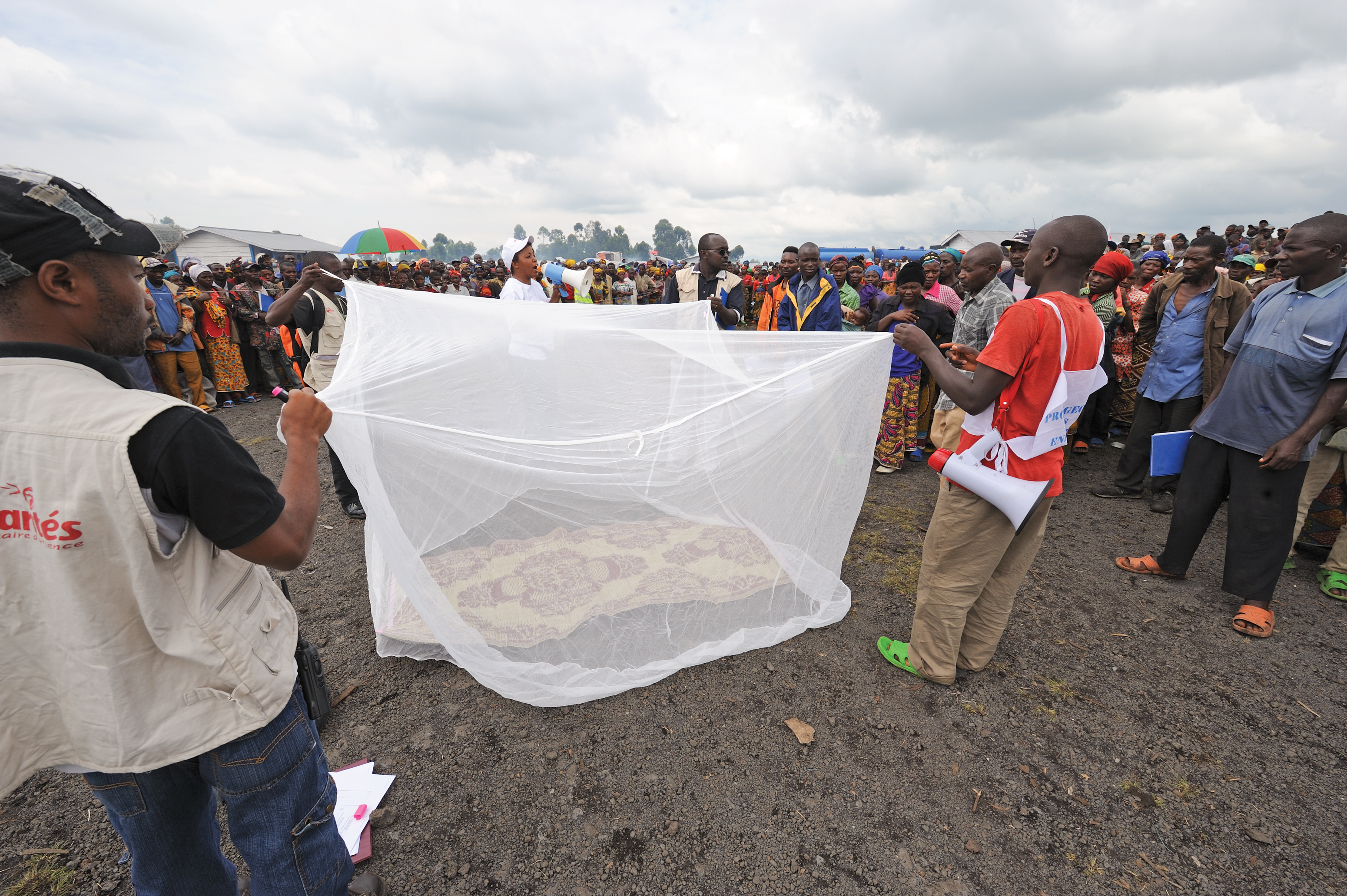Research finds that mosquito nets often used improperly
There are an estimated 207 million cases of malaria each year—90 per cent of which occur in sub-Saharan Africa—resulting in over half a million deaths per year. Mosquito nets treated with insecticide are the most effective way to prevent the spread of malaria—but U of O biology masters student Emily Acheson, and geography masters student Andrew Plowright found that these nets aren’t always distributed effectively.
Their study measured the world’s response to malaria, with a focus on the country of Tanzania, and looked at whether mosquito nets were being effectively distributed to areas with the highest populations of mosquitos. The study Where have all the mosquito nets gone? Spatial modelling reveals mosquito net distributions across Tanzania do not target optimal Anopheles mosquito habitats was published in Malaria Journal in August 2015.
“We were interested in knowing if mosquito nets were truly targeting malaria hotspots,” said Acheson.
First, they tracked mosquito habitats across Tanzania to pinpoint these hotspots. Then they took data from national surveys to find where mosquito nets were being used.
Acheson said that they hoped to find that everyone had mosquito nets. Failing that, they hoped that the nets being used were at least distributed in proportion to mosquito populations. “We didn’t find either of those outcomes,” she said.
“We found that not only was mosquito net coverage around the country very random, but we also found, startlingly, that areas that were considered malaria hotspots net ownership actually decreased,” said Acheson.
“It’s difficult for governments and control programs to know how to systematically get out mosquito nets,” she said. “If you can’t cover everyone, then it’s important to target the people who are most at risk of malaria, and until they do modelling like this they don’t know what those areas are.”
It’s not everyday that a grad student gets their work published, let alone in a reputable journal.
“That was the first journal I tried to get it published in, and it accepted got with minor revisions,” said Acheson. “I think the reason it got taken up so quickly was because it’s a very novel methodology, nobody has ever combined these two factors together before.”
Jeremy Kerr, a biology professor at the U of O and the paper’s supervisor, said he was impressed with the paper and the attention it got. “Emily is an extraordinary young researcher, and she’s going to continue to do amazing things,” he said.
Perhaps her paper’s success shouldn’t come as a surprise, given Acheson’s passion for the subject. “I love parasitology,” she said. “My friends find this creepy, but I think parasites are extremely misunderstood and understudied… I think that people really underestimate what they can do.”
People are taking all kinds of approaches to ending malaria, including genetically modified mosquitos, but Acheson says, at least right now, nets are our best bet.
“There are a lot of different ways that they’re trying to fight it, so far none of them have worked that well at a large scale yet, ” said Acheson. “Right now, I still think mosquito nets are the most promising.”
No word yet on Acheson’s next big study, but she did hint that she’s currently studying a killer fungus in Vancouver.





